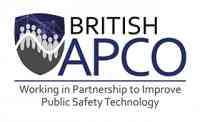
Implementing the Prevent Duty - a whole school approach
Mubina Asaria, safeguarding consultant, at edtech charity LGfL - The Notional Grid for Learning - look at effective implementation of Prevent Duty in schools
Effective implementation of the Prevent duty requires consistency, transparency and a whole school approach to ensure appropriate support is available for individuals who may demonstrate vulnerabilities to radicalisation. This is ultimately an extension of the safeguarding process, in the same way that schools can help to safeguard young people from child sexual exploitation, drugs and other forms of harm. So what can schools do to help meet compliance and overcome typical issues and challenges?
Please see here some practical steps to support an effective, sustainable approach.
Planning
The key to a successful strategy is planning, involving the whole school community. Schools can nominate a staff member as the school Prevent lead and set up a Prevent working group to set out a clear and shared vision. This could include your senior leaders (SLT), designated safeguarding lead (DSL), PSHE/RSHE lead, CPD lead and a member of the Governing body. If this is logistically challenging, you could consider asking the SLT or an existing safeguarding forum to incorporate Prevent into their regular meetings as an ongoing agenda item.
Whilst it may not always be practical for everyone to always attend, the key lies in effective communication, ensuring all stakeholders are regularly updated on developments and given opportunities to share progress. A good starting point could be carrying out a baseline survey to identify aims – e.g. to build staff confidence around current vulnerability or promoting an understanding of British values – and get your team to complete the new ‘Prevent quiz for staff’ to identify knowledge gaps to shape your training, available for free at prevent.lgfl.net.
Policy and practice
It is important to consider the findings from your discussions to ensure your strategy is embedded into the school culture. As well as reviewing your school policy and practices around Prevent, you should also undertake a risk assessment, informed by engagement with your local authority Prevent team to assess the local risk. This need not be Prevent specific and can be incorporated into your wider risk assessment. Remember that implementing the Prevent duty is not a tick-box exercise, which is why we’ve worked with colleagues at the Department for Education to develop a Prevent Self-Assessment Tool for Schools to provide a practical overview of areas to consider throughout the school year. By encouraging a cycle of continuous review, the tool can help you self-assess how well your Prevent policies and practices are embedded, and identify any challenges and areas of weakness.
Promoting British values
Ofsted will be looking for evidence of how British values permeate throughout the school. Many schools will already be addressing these through subjects such as PSHE, RE and Citizenship, combined with extra-curricular initiatives via assemblies, circle time, school councils and debating clubs to promote student voice and opportunities to discuss topical issues in a safe space.
Adopting a contextual safeguarding approach is also an effective way to embed the foundational knowledge and skills essential to manage risk. This could involve conversations with young people to reflect on their context and any risk factors they could experience – online or through association with peers or adults – combined with cross-curricular opportunities to build on key safeguarding themes. There are several free resources to help facilitate discussion, build resilience to extremism and teach about fundamental British values, including Going Too Far – an interactive resource for primary and secondary schools to help understand extremism and promote critical thinking with videos, case studies and scenario-based activities.
Schools could also consider mapping their British values across and beyond the curriculum to provide a snapshot and identify any gaps.
Online safety
With the Prevent Duty Guidance: for England and Wales requiring schools to ensure children are safe from terrorist and extremist material when accessing the internet in school, including by establishing appropriate levels of filtering, it is important to remember that no filtering solution is fool proof. Schools should therefore consider a holistic approach to online safety, e.g. ensuring policies and user agreements are updated and signed, monitoring pupil/staff activity, embedding an age-appropriate curriculum and promoting parental awareness. An annual online safety audit can be helpful to reflect the fluid realities of technological change, evolving harms and user behaviours.
Communicate, review and monitor
Remember that clear communication and consistent messages will sustain awareness of your strategy across the school community: ensure all staff have had training and that this is logged; designated safeguarding leads receive more in-depth training, including on ideologies; provide regular updates at
staff briefings; encourage governors to attend safeguarding and any relevant staff training or assemblies and to scrutinise policy and practice; and invite parents to a safeguarding session to raise awareness of Prevent as part of wider safeguarding issues including online safety. Do factor in time to review, monitor and evaluate your strategy through regular meetings with your Prevent or safeguarding team.













